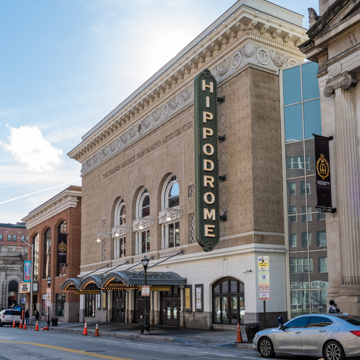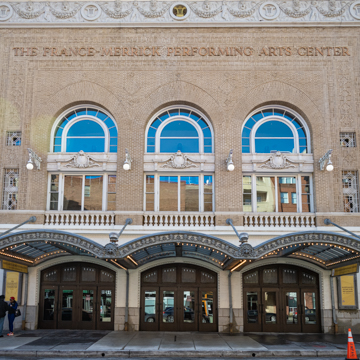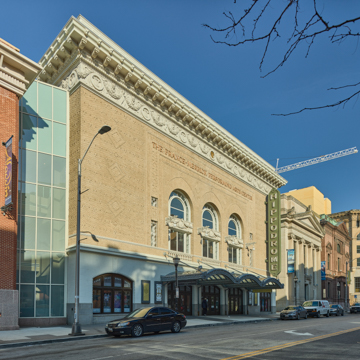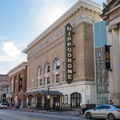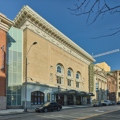Scottish-born architect Lamb was the preeminent theater specialist in the country, designing movie palaces and vaudeville theaters in dozens of major cities through his New York City-based firm during the early twentieth century. In Baltimore he designed a combination motion picture/vaudeville theater for pioneering movie theater promoters Pearce and Scheck that opened on November 23, 1914. As an impressive addition to Baltimore’s entertainment district with a richly ornamental facade of terra-cotta and patterned brick, the Hippodrome was promoted as the “largest playhouse South of Philadelphia.” Performances at the Hippodrome featured vaudeville acts, short movies, and a house orchestra into the 1950s, thereafter switching to movies only.
The Hippodrome was the last operating downtown movie theater in Baltimore when it was shuttered in 1989. The France-Merrick Foundation spearheaded redevelopment efforts creating a theater complex incorporating a whole city block. The larger space incorporated into the restored theater would address the limitations of the original shallow stage and include the shells of two former bank buildings to the north. The Hippodrome Theater reopened in 2004 with a recreated terra-cotta cornice and signage.


